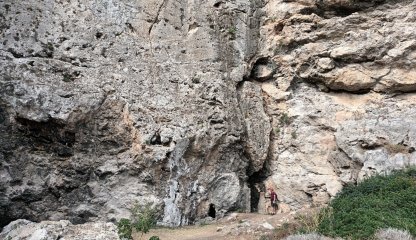Capalbio and the treasure of the Costa d'Argento



Located at the southern end of the Maremma, Capalbio is one of the most sought-after villages in Italy, where history and legend are intertwined. It is here that our itinerary begins, precisely from the station of Capalbio Scalo: we take, from the railway underpass, the Litoranea provincial road (Provincial Road 68). From this very low-traffic road that runs between the coast and the railway, we start riding to discover the treasures of the Costa d'Argento.
On our left, the body of salt water of the WWF Oasis of Lake Burano, with the Buranaccio coastal tower, the southernmost 16th-century defensive outpost in Tuscany. Leaving aside the subsequent junction, we consider a detour to Macchiatonda, a beautiful black sand beach with a deep and clean sea.
We take the Litoranea again for 4 kilometers, reaching the junction for Ansedonia. We do not go up the hill side, we go around it on the sea side to the beach overlooked by the Tagliata Tower. The tower takes its name from the Etruscan Tagliata, a hydraulic engineering work built by the Romans to improve the backflow of water from the small harbor. On the rock wall, at the base of the canal, is the mysterious Spacco della Regina (Queen’s Cleft): a natural fissure that has given rise to numerous legends.
Back at the Ansedonia crossroads, we follow Provincial Road 68 taking the railroad underpass, stopping near the milestone that marks the junction of the provincial road with State Road 1 Aurelia. However, the state road is not our destination; instead, a secondary road, partly unpaved, which bypasses the Malabarba hill, is our destination, taking us to the provincial road Pedemontana (Provincial Road 93). The detour is also used by the "Vetta Mare" mountain bike/gravel route, which carries the characteristic red direction arrows on white.
We follow Provincial Road 68 for about 2 kilometers before we find ourselves, on the left, at the foot of the hill where the Romans built the Villa Settefinestre. Erected in the first century B.C., the villa is characterized by extended cryptoportici into the basement level, functioning as service corridors not exposed to view. The archaeological area open to the public is now part of a scenic, privately-owned garden. Immersed in the wide spaces of the Maremma countryside, we proceed for about 5 kilometers and then turn left onto Strada dell'Oliveto, a dirt stretch of about 2,5 kilometers that winds between two low hills planted with olive trees and vines. Crossing Strada dei Poggetti we find the tarmac again, and we move forward along Via di Cannetello slightly uphill.
After a junction, the road soars, we have reached the foot of the hill over which towers the Rocca Aldobrandesca of Capalbio. We must conquer the well-deserved rest from this Maremma "ride" on these 800 meters of steep uphill separating us from the gates of the ancient medieval village. The time has come to fill up on energy: let’s enjoy the view from the patrol walkway, let's stop and enjoy a dish of the typical cuisine in one of the restaurants outside or inside the centuries-old crenellated walls, here food and wine quality is a constant feature, you'll be spoiled for choice. Leaving Capalbio, we follow the Pescia Fiorentina provincial road (Provincial Road 75). Past the intersection with Provincial Road 101 Sgrilla, we continue to the right in the direction of Rome, our wheels now running fast.
In Garavicchio we find the Giardino dei Tarocchi (Tarot Garden), artist Niki de Saint Phalle's imaginative creation of large, colorful sculptures sprouting from the Mediterranean scrub. Still downhill, we follow the Pescia Fiorentina - Chiarone road and, having passed the junction of State Road 1 Aurelia, head toward the coast. In Chiarone Scalo, a new underpass allows us to take the Litoranea provincial road again, 7 kilometers separate us from the Capalbio station.
Slowly enjoying this last stretch, the environment and nature around us exude an indescribable charm. Back in sight of Lake Burano, the mighty silhouette of the Spanish tower warns us of the imminent conclusion of our journey, 43 kilometers of beauty through nature, culture and history of an authentic and wild land, the treasures of the Costa d’Argento.